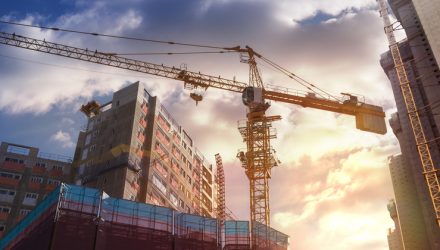The FlexShares STOXX Global Broad Infrastructure Index Fund (NYSEArca: NFRA) and other infrastructure investments are bound to be in the spotlight this year because 2020 is an election year, but seismic shifts in the infrastructure investment landscape confirm there’s more to the story.
NFRA tries to reflect the performance of the STOXX Global Broad Infrastructure Index, which identifies equities that derive the majority of revenue from infrastructure business, providing exposure to not only infrastructure sectors, but non-traditional ones as well.
Some analysts believe that for domestic infrastructure issues to be properly addressed and for related investments to reach full potential, governments may need to shift how they frame the debate.
“Any government plan for renewing and advancing essential US infrastructure requires a new paradigm to adequately address the infrastructure funding deficit,” said Fitch Ratings in a recent note. “While a source of adequate and sustainable funding is a critical component, a results-oriented, objective and strategic approach to investment, along with responsible stewardship of the public purse, are paramount. Increased spending without a strategic, comprehensive approach to infrastructure investment based on national priorities will not go far in addressing the continued deterioration of critical economic assets.”
NFRA Works Over High Barriers
NFRA’s index focuses on long-lived assets in industries with very high barriers to entry, with at least 50% of their revenue from key sectors with a 3-month average daily trending volume of at least $1 million. The portfolio is weighted based on a free-float market cap with certain constraints to limit exposure in any one security, sub-sector, or country. Additionally, the fund is rebalanced annually.
“Passage of a large-scale federal infrastructure spending bill stalled in 2019 due to a lack of consensus on a funding approach, despite bipartisan recognition of the need to address the country’s aging infrastructure,” according to Fitch. “Political disagreements partially reflect difficult budget decisions, which will need to be made in the context of a federal deficit that is projected to reach $1.0 trillion this fiscal year. Trying to tackle the issue in a presidential election year will be next to impossible.”
One of the advantages of infrastructure is that regardless of what the global economy is doing, it’s a necessity. Furthermore, it’s less prone to the cyclical movements of the economy, which makes it a viable alternative as a defensive play.
“Investments in infrastructure have historically led to increased economic activity and growth. The risk of putting off investment is obvious: infrastructure assets, which are essential to the US economy, will continue to deteriorate, requiring even greater financial resources down the line and making the problem even more difficult to address,” notes Fitch. “Slowing GDP growth will compound this risk, making increased investment less feasible. The irony is that the ability to invest is strongest when the economy is robust.”
For more on multi-asset strategies, please visit our Multi-Asset Channel.
The opinions and forecasts expressed herein are solely those of Tom Lydon, and may not actually come to pass. Information on this site should not be used or construed as an offer to sell, a solicitation of an offer to buy, or a recommendation for any product.

